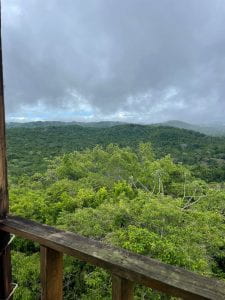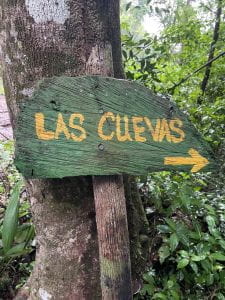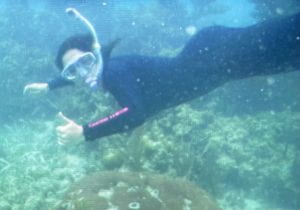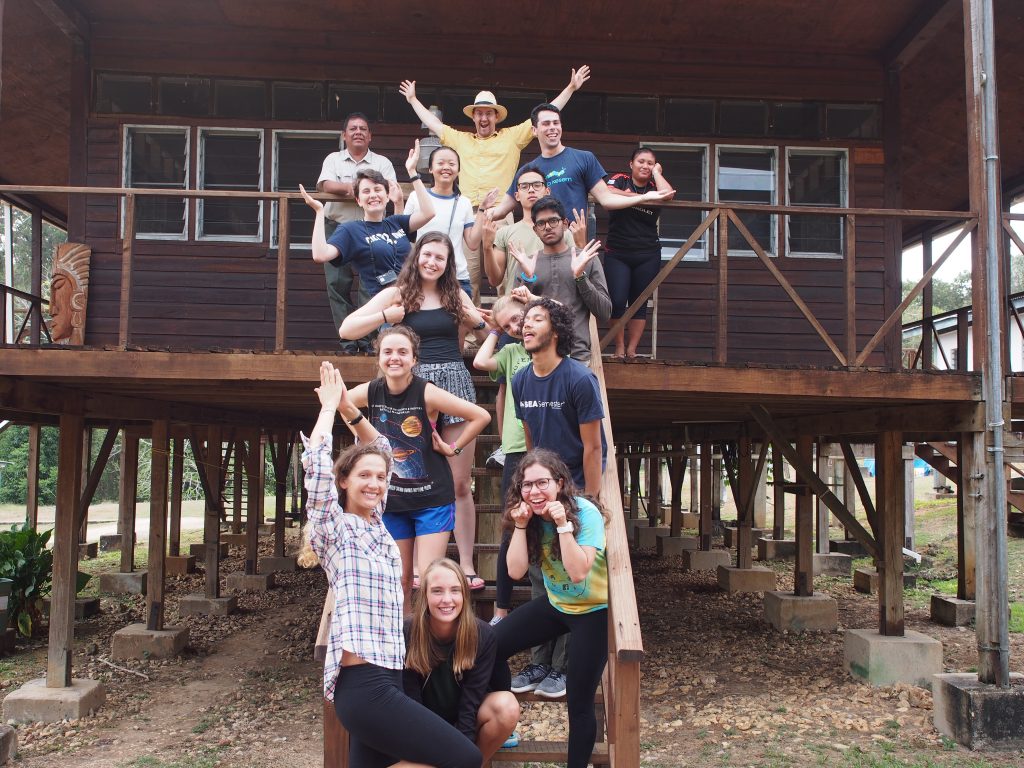These past two weeks were a whirlwind of learning and witnessing the beautiful biodiversity between the two most diverse ecosystems on earth— the coral reef and the tropical rainforest!
It gave me a taste of home being back in a marine ecosystem, but this environment was also very different and allowed me develop a more well-rounded view and knowledge of coral reefs across the globe. After researching coral reef framework, I learned the critical importance that reef-building corals hold in maintaining the the coral reef ecosystem as climate change, disease, and other anthropogenic factors threaten the very continued existence of the coral reefs we have loved and admired. Having seen coral bleaching events occur in my home town, I was dismayed to learn that the coral loss of diversity is even higher in the Caribbean with a 25% loss of genetic diversity which occurred in just the last 15 years. I feel a deepened sense of duty and desire to help preserve what is left of healthy coral reefs. My favorite things to see on the reef were lobsters, sea urchins, turtles, mantis shrimp, ctenophores, hydroids, annelids (mostly Christmas tree worms) and many more creatures! I liked picking up the sea urchins gently, and seeing hermit crabs shell swapping!
Similarly, the beautiful tropical rainforests at Las Cuevas left me astonished with its ancient and delicate pattern of nutrient recycling (which is also seen similarly with coral reefs and sediment). We learned that there are layers in soil which allows for the intake and recycling of nutrients which are imperative to the survival of so many species within the rainforest (similarly seen in coral reef framework). Slash burn agriculture is very harmful for the soil and disrupts this nutrient cycle so that plants can never prosper quite the same in areas that have been affected. We also learned that many creatures in the rainforest have specific niches such as epiphytes which are plants that reside in the canopy. This nutrient process of recycling is what allows these ecosystems to be so abundant with flora and fauna!

We learned that there are many interesting similarities and connections between the surf and turf!! For example, we learned that when nutrient pollution in the rainforest can make its way to the coral reefs through rivers which could cause a massive sargassum algal bloom which blocks sunlight from coral reefs. One thing that definitely left an impression on me was the interconnectivity of every ecosystem. For example, we learned that mangroves filter out pollution, sea grass beds help prevent erosion, and coral reefs provide biodiversity at Glover’s Reef. (SO COOL)
I couldn’t comprehend the level of diversity and closeness to wildlife that I would be exposed to! This trip exceeded my expectations in every way! I loved the opportunity to witness marine and terrestrial animals in their own ecosystems. I loved watching squid communicate with each on a patch reef. I was amazed by the complexity of leaf-cutter ant communication while digging up an ant hill. I am definitely filled with a new awe and appreciation for all ants now. The coolest experience for me was definitely the night hike and the interaction between the Morelet tree frog and Rusty’s face (haha) and the interaction between the snake and the tree frogs eggs. I truly felt like a special guest viewing the world of wildlife, and it was the most amazing and rewarding feeling seeing creatures behave normally and undisturbed in the wild. I strongly wish to preserve these creatures and ecosystems. It pains me to think that the critically endangered tree frogs might not be there if I were ever to return.
Although the bug bites and cold showers were inconvenient at times, it was nothing compared with amazing experiences this trip offered and it is just part of true field work experience that most biologists have! It helped me solidify my passion for conservation and helped me develop more as a TFB. For instance, I have started to attempt to identify each species I encounter and think critically about scientific surveys that could be conducted to help protect the area. I was also bitten by the travel and Chiquibul bugs. I feel drawn to go beyond the usual travel experience, and I want to now travel purposefully to help in what ever way I can to improve these ecosystems.

Three things I’ve taken way from this trip:
- The most abundant, diverse , and interconnected ecosystems on earth that rely on very specific processes to maintain life forms that reside in these ecosystems are being threatened by humans.
- Always expect the unexpected! There were so many moments during this trip that left me in awe such as when we discovered a Mexican burrowing toad in an ant hill! it’s important to also not expect to find results in our surveys to prevent bias and keep an open mind to possibilities that biologists may not have accounted for.
- Empowering people to care and take interest in nature is a big step towards preserving ecosystems and animals. After talking with experts, I also know how hard it is to preserve ecosystems with limited resources. For example, only 6 % of coral reefs are protected properly and Dr. Arevalo shared with us the hard and long the process it can be to gain government support on conservation issues.
I have loved all the riddles and TFB jokes that our group has shared together. It was such a privilege to grow closer to every member of our group and so amazing to share these experiences with passionate professors and students who are also interested in nature and biology, as well as the junior TFBs that remind me to always remain curious. 😉

I have learned so much on this trip! Thank you all!
Peace and Love Nature and the TFB life <3
~ Maegan


